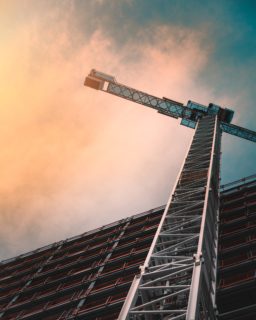
On August 8, 2023, the U.S. Department of Labor (DOL) announced its final rule related to the Davis-Bacon Act (the “Act”), entitled “Updating the Davis-Bacon and Related Acts Regulations.” However, the official final rule must be published in the Federal Register – likely by week’s end – before going into effect 60 days after publication.
DOL issued its notice of proposed rulemaking (“NPRM”) in March 2022 and received more than 40,000 comments from interested stakeholders. Evaluating and addressing those comments took the better part of a year, as DOL did not send the rule to the Office of Information and Regulatory Affairs (“OIRA”) for White House approval until December 16, 2022. After languishing for months, OIRA has now concluded its review, allowing DOL to move forward with its final rule.Continue Reading Break out the Neon: ‘80s Era Davis-Bacon “Prevailing Wage” Definition Restored in DOL Final Rule


 Issue
Issue In heavy-civil, excavation, and infrastructure work, the risk of encountering differing, unknown, or concealed conditions is significant, as it is nearly impossible to document or predict everything that the contractor will encounter below the surface when performing its operations. Although standard pre-bid site surveys, including soil and geotechnical reports, are good resources to evaluate potential concerns, they will almost never be all encompassing as to what a contractor will face when its work is in progress. Given these unique, complicated, and costly risks, some project owners will seek to pass liability for such risk onto the those performing the work. Indeed, owners may seek to transfer these unknown risks, including unforeseen conditions, to contractors making the financial burden significant for those bidding the work. Accordingly, it is imperative that the contractor balance the desire to submit a competitive price to win the work with the need to ensure that it has some type of remedy or recovery should it encounter such concealed or differing conditions. Faced with this balancing act, contractors performing excavation and foundation work should be intimately familiar with the site disclaimer, exculpatory, and risk-transferring clauses present in their agreements and the effect that such provisions may have on their ability to recover additional costs and time should they encounter differing conditions.
In heavy-civil, excavation, and infrastructure work, the risk of encountering differing, unknown, or concealed conditions is significant, as it is nearly impossible to document or predict everything that the contractor will encounter below the surface when performing its operations. Although standard pre-bid site surveys, including soil and geotechnical reports, are good resources to evaluate potential concerns, they will almost never be all encompassing as to what a contractor will face when its work is in progress. Given these unique, complicated, and costly risks, some project owners will seek to pass liability for such risk onto the those performing the work. Indeed, owners may seek to transfer these unknown risks, including unforeseen conditions, to contractors making the financial burden significant for those bidding the work. Accordingly, it is imperative that the contractor balance the desire to submit a competitive price to win the work with the need to ensure that it has some type of remedy or recovery should it encounter such concealed or differing conditions. Faced with this balancing act, contractors performing excavation and foundation work should be intimately familiar with the site disclaimer, exculpatory, and risk-transferring clauses present in their agreements and the effect that such provisions may have on their ability to recover additional costs and time should they encounter differing conditions.
 This webinar provides a practical review of the impacts of COVID-19 on public and private construction contracts. Coverage includes the clauses covering delay, impact, acceleration, suspension of the work, changes and termination, whether express or constructive. The program focuses on the practical aspects of how best to manage the current situation, notice requirements, documenting claims,
This webinar provides a practical review of the impacts of COVID-19 on public and private construction contracts. Coverage includes the clauses covering delay, impact, acceleration, suspension of the work, changes and termination, whether express or constructive. The program focuses on the practical aspects of how best to manage the current situation, notice requirements, documenting claims,